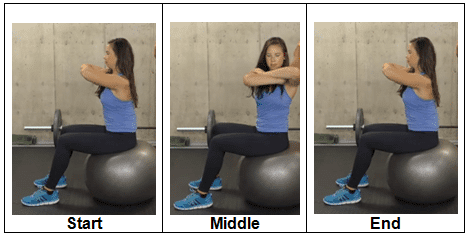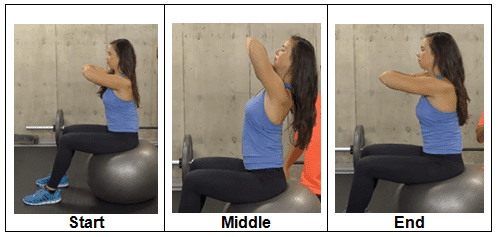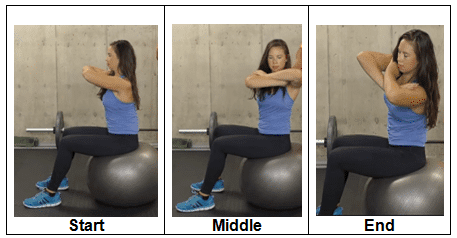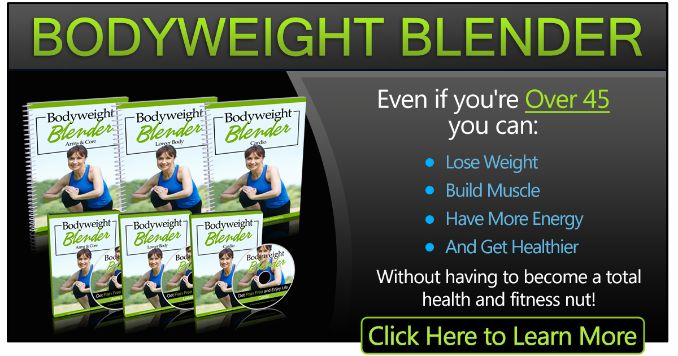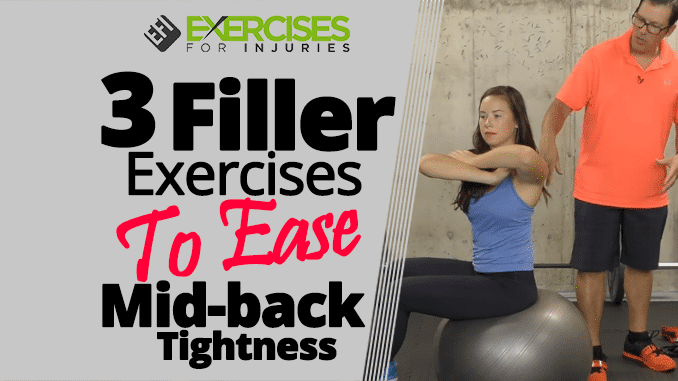
CLICK HERE to watch the YouTube video.
Are your midback muscles tight? If so, performing a full range of motion can be very difficult. Tight muscles are common in people who spend long hours in front of a computer screen or driving. The tightness can also occur with other conditions like arthritis and spinal stenosis.
What Causes Midback Tightness?
Upper back pain is felt in the upper part of your chest, between your neck and rib cage. Middle back pain occurs on this same level but can also be felt in the lower part of your body with symptoms including arm or leg stiffness. Lower back pain typically affects the area surrounding this middle spine segment, where it meets other muscles to help support and stabilize you when standing upright.
The sciatic nerve travels through that region as well, so any issues there may cause numbness or tingling sensations like arms or legs while walking, feeling a pins-and-needles sensation down one side of their body (usually an arm) after sitting for too long without moving their hips effectively enough to change position, a stabbing type feeling at first followed by burning if they continue pushing against something incorrectly (like leaning over suddenly), frustration if physical activity isn’t readily available due to health concerns like pregnancy.
The upper and middle back are not prone to the same types of injuries as other body areas. Their bones don’t flex or move similarly to your lower back or neck, so they work with ribs to keep you strong and safe. These muscles protect vital organs like your heart and lungs.
These may be caused by:
- Poor posture
- A fracture of one of the vertebrae
- Overuse
- Pressure in the nerves
How to Maintain Good Posture?
Good posture is more than just standing up straight. It’s an important part of your long-term health and prevents pain, injuries, and other health problems with poor posture.
Two types of posture:
- Dynamic posture is how you move your body when it moves. For example, walking or running – the word “dynamic” comes from these actions.
- Static posture is the way you stand, sit or sleep without moving. In contrast to a dynamic stance involving moving around, your body does not need to adjust for balance and is less likely to suffer from muscle fatigue.
Maintaining good posture should be done by keeping your spine in a natural curvature. Your head should be above your shoulders, and the top of your shoulder should stay over to the hip line.
People who sit often and females who do not wear proper-fitting bras often have midback tightness. The exercises below are great examples of filler exercises. You can do these quick routines between exercises or sets instead of quick rests. This allows you to continuously improve your body’s movement, decrease injury, help with recovery and continue getting more benefits from your workout.
Here are three exercises that can help ease the tension in your back and improve your quality of life.
1. Sitting and Rotating
Take a seat. Place your hands on your shoulders. Rotate to one side as far as you can. Hold that position for a second or two. Then, move to the front and the other side. Go back and forth from side to side.
Sitting and Rotating
Perform one set of 3 repetitions on each side in a smooth, controlled movement, with a good stop at the end position for 2 seconds. You may progress to 5 reps on each side with a light resistance in your midback area. We’re trying to loosen up the joints in that midback area by going through this exercise.
2. Back Arches
Back Arches
This exercise works best on a solid surface like a chair or bench. Place your hands on your shoulders and arch your back. We’re targeting the midback area, arching through the thoracic spine.
Perform one set of five to 10 repetitions with a good stop at the end for a second with light intensity.
3. Sitting, Rotating, and Side Bending
Sitting, Rotating, and Side Bending
Rotate, bend the side, and then return to the starting position. Then, repeat this rotation and side bend on the other side. With this exercise, we are focusing on the rotation and side bending movements.
Perform one set of 3 repetitions on each side, a total of 6 movements. You can progress to 5 reps or ten movements in a smooth, controlled movement with a quick stop at the end position for about a second with light intensity. We’re looking at loosening up those joints and having those joints move a lot better.
Take care!
Rick Kaselj, MS
For your equipment-free workout to target your entire body, check out the Bodyweight Blender program here!

